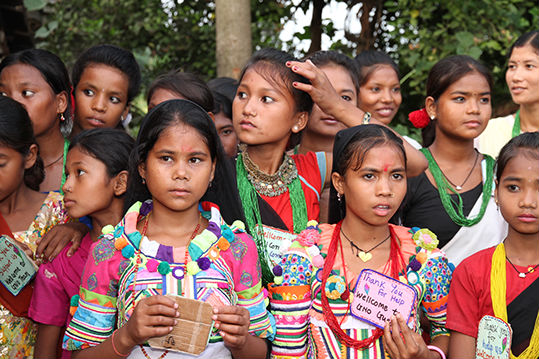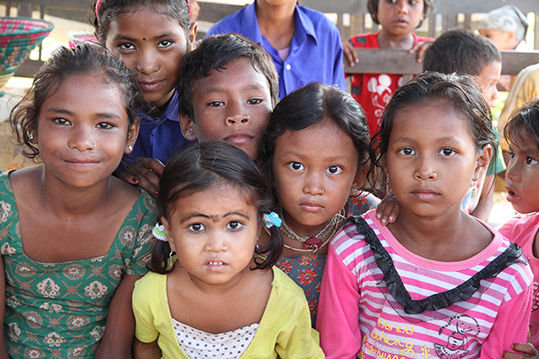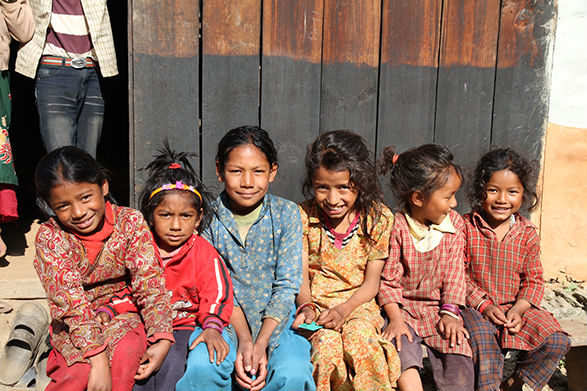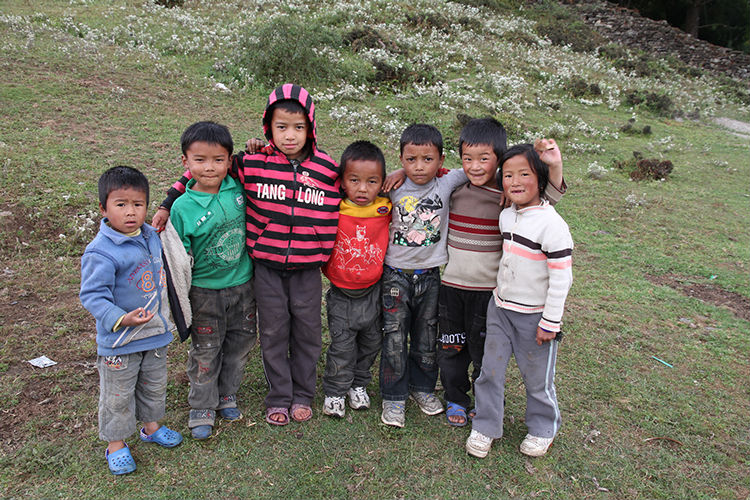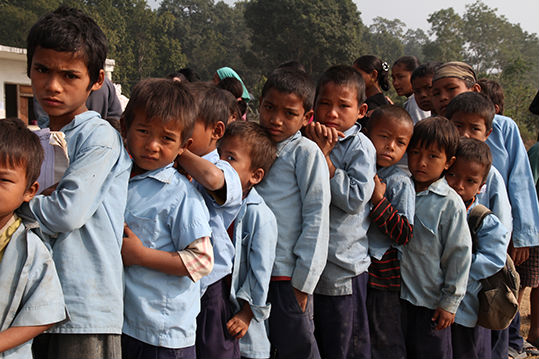Project in Laos
In August 2010 we have taken a sponsorship girl in Laos. Her name is Some and she belongs to an ethnic minority in the north of Laos. (See Map).
In addition to the girl sponsorship we wanted to provide targeted support for a project in the same program area and came across the education and health project described below which we have considered a four-digit donations twice already.
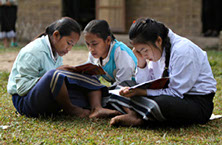
Source: Plan International
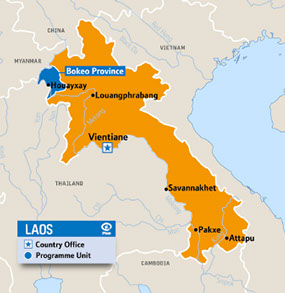
Challenge
In Laos, 72 of the 142 districts officially considered "poor". Most of them consist of widely scattered communities in remote mountainous regions, which are often accessible only on foot or by boat. Ethnic minorities make up a large part of the local population; These often have no access to education and health facilities.
Education
In Laos there is for children between six and 15 years compulsory education. Although a large proportion of girls and boys starts school, but only about half complete primary school. Many ethnic minority children in rural areas are particularly disadvantaged. The enrollment rate of girls in this case is below 50 percent.
The reasons for this are many: Many schools are too far away, so the girls and boys can not cover the way to school every day. The teaching quality is very poor, since many teachers are not trained for this profession. In addition, the salaries are so low that teachers are often absent, to earn additional income on which they depend. The poor quality of teaching and the absenteeism of teachers keep many parents from having to send their children to school. In addition, the language barrier and cultural differences in the classroom. Most teachers come from other districts and provinces, so fundamental communication problems between teachers and school students exist. The children receive an education in a language completely unknown to them, and also the content of teaching are not matched to their daily lives and the environment. This has a negative impact on the learning motivation of the boys and girls. On top of that is expected that the girls take care of their younger siblings, with the result that they are often enrolled in school first with eleven or twelve years before they are often already married at age 14 and leave the school.
Health
Also in the health sector, the situation is worrying. The maternal mortality rate is very high as well as the children's and infant mortality. Only about six to eight percent of pregnant women in the three project districts give birth in a health center. Reason for this is in addition to the long distances to the nearest health center often again language barriers and cultural barriers, as well as the medical staff does not speak the local languages and do not know the cultural backgrounds. In response, the Lao Ministry of Health has adopted a strategy for the training of midwives. Due to the low education levels of many relatives of the various ethnic minorities, which account for 45 percent of the total population of Laos, they will be highly under-represented in this training course.
Aim of the project
Teacher training
25 young men and women from ethnic minorities aged 17 to 20 are given the opportunity to complete a two-year teacher training in this project. It is planned that they return after their education back to their communities, in order to specifically assist with their newly acquired knowledge to the classroom on site. Through their cultural background they will appear as a mediator between school students, their parents and teachers in schools. So that they can inform parents specifically about the importance of school attendance of their children, mediate in trouble and ensure that the children and their interests and needs are the focus of the lesson. This will strengthen the motivation of boys and girls to continue attending the school, and also will help that even gains importance in the municipalities of the subject school attendance..
Training as a midwife
Another 15 young women from ethnic minorities are trained within two years to midwives. Again, it is planned that they - same like the teacher trainees - will return to their communities after completing their training in order to exercise their profession. As there are currently no trained midwives in the province of Bokeo, it can be assumed that they will contribute significantly to reducing child and maternal mortality. With their cultural and linguistic background they have direct access to the women in their communities, can pass on their knowledge specifically to convey with problems and questions of patients in local health centers and thus increase the acceptance of these centers in the population.
Activities
At the beginning of the project, an introductory workshop for all interested candidates will be organized to inform about the project and its objectives. Subsequently, a thorough selection is performed to select the scholarship holders. Key criteria for a selection include academic achievement, a great motivation to exercise in one of the professions, the belonging to an ethnic minority in Laos as well as the willingness to work after the training in the home community. In addition, the support through the family is important, so that young women and men do not drop out prematurely. The Ministries of Education and Health, the local secondary schools and authorities will accompany the selection process. It is planned that these authorities will provide the young women and men after training job offers in schools and health centers.
In cooperation with the two training schools the scholarship holders will be provided appropriate training places available. During their training, they will get help and give from a project officer, at the school and personal problems - such as financial emergencies in the family. The aim is the successful completion of the training and the provision of a workplace in the home communities.
In addition to training is to visit an already practicing midwife in a health center, or at a skilled, experienced teacher at a school planned. Thus, the young men and women get to know a role model where they can pursue career orientation.
Project participants
40 young men and women from the three districts of Meung, Pha Oudom and Pak Tha will benefit through a training grant directly from this project. Since it is planned that they then return to their communities and work there, indirectly benefit all 67 964 children and adults in the communities of the three project districts, especially pregnant women, their children and primary school children, from this project.
Project area, duration and budget
Project area: Meung, Pha Oudom and Pak Tha (three districts in the Bokeo province)
Project duration: April 2012 – September 2014
Project budget: 127.479 EUR
Source: Plan Germany: Project description LAO0025 Training grants for ethnic minorities
To the Top
⬆
